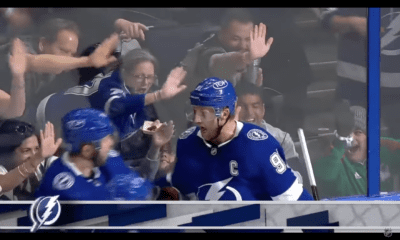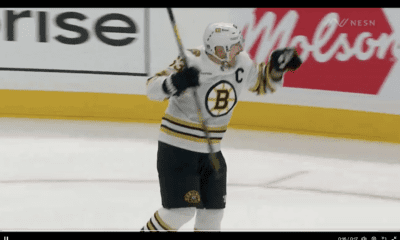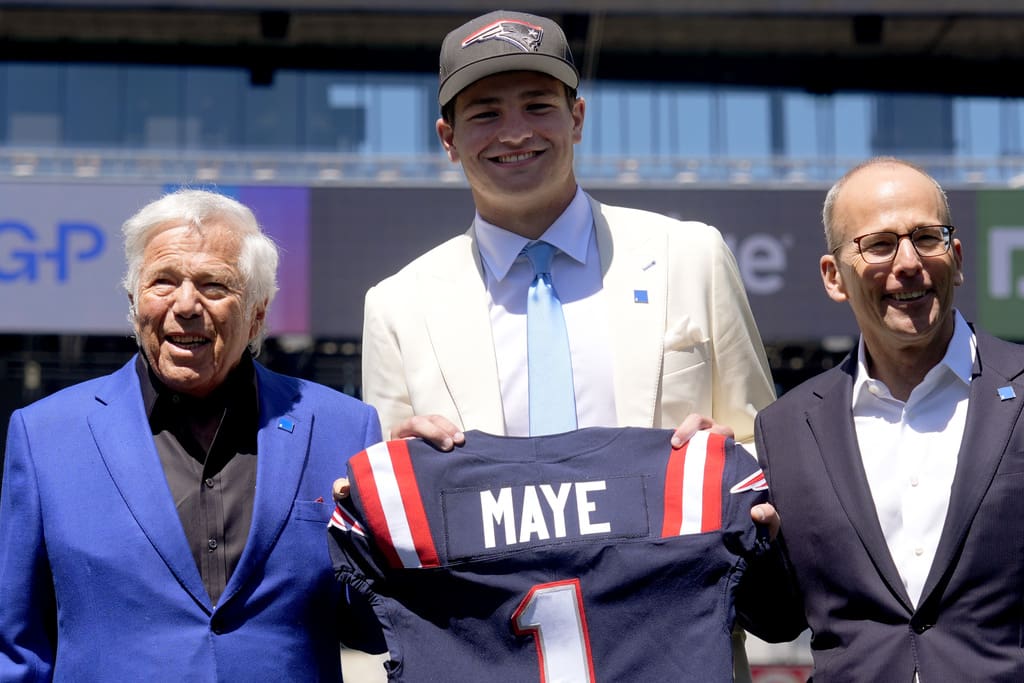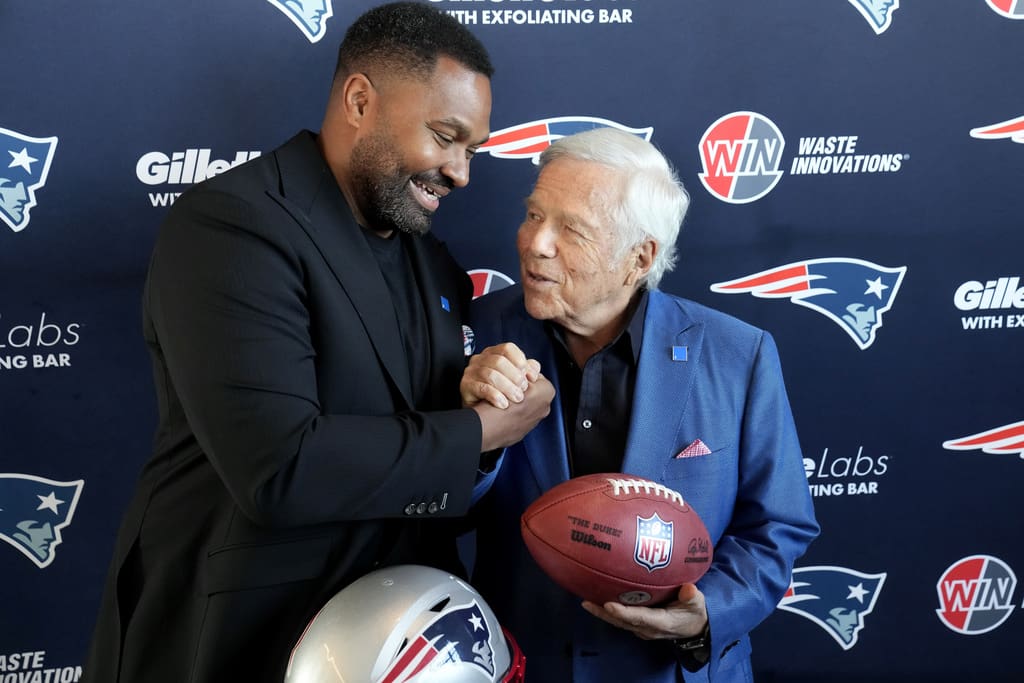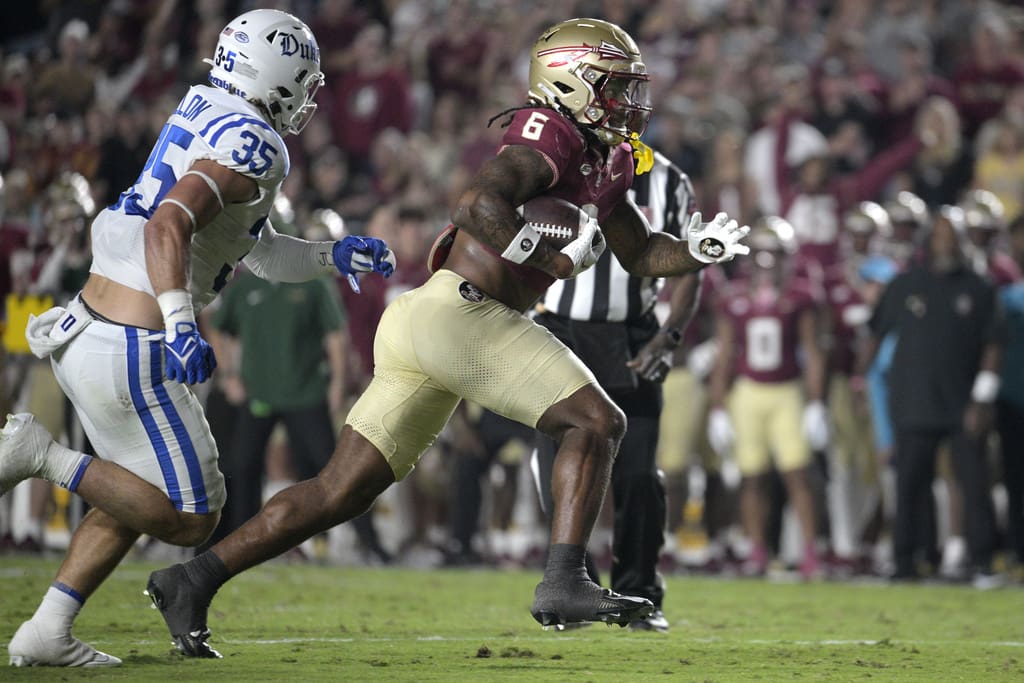Boston Bruins
Colageo: In Victory, Boston Bruins Show Losses

Patrice Bergeron’s Alumni team debut on Saturday at Warrior was coincidental with the emerging reality that, in order to win a playoff series, the Boston Bruins are going to have to reckon with their inability to win defensive-zone faceoffs with the game on the line.
That is where the Bruins miss Patrice Bergeron most. If David Pastrnak teaches himself that skill, then he’ll be worth every penny of the highest AAV in Boston Bruins history. As it is, Saturday night’s 4-3 overtime victory over the Toronto Maple Leafs was a vintage performance by ‘Pasta’ on the sport’s biggest stage.
Pastrnak opened the scoring with a trademark snipe, made a brilliant pass to a sneaky Kevin Shattenkirk for the journeyman defenseman’s first goal as a Bruin, and he recovered his breakaway miss in overtime to pop the puck back out where a leaping Brad Marchand put it down in time to rifle it home and send the Bruins off Toronto ice winners of two in a row.
The only Boston goal in which Pasta did not factor was Trent Frederic’s third-period, goal-ahead goal (more on Frederic below).
At 16-4-3 with Columbus at TD Garden at 7 p.m. Sunday, the Bruins have put themselves in great position to run through a soft schedule until their December 16 showdown with the Rangers at TD Garden.
As for the faceoff issue, their deficiency is no longer a statistical anomaly to yet another great regular season. It’s a glaring weakness that has shown in glimpses how it will rear its ugly head come playoff time.
What that means internally or at the trade deadline has yet to be determined, but despite Pavel Zacha’s 5-12 night on the dot, Coach Jim Montgomery took his chances on Zacha’s backhand pull to the corner (when the faceoff was to the right of Linus Ullmark) rather than injecting the right-shooting Charlie Coyle, who would have had to win those draws with his forehand.
Late in the game, Montgomery doubled up with both Zacha and Coyle, who presumably would have taken a D-zone draw to the left of Ullmark, but after a clean entry by Toronto both centermen collapsed to the ensuing puck scrum at the Boston goalmouth. Calle Jarnkrok boxed out Zacha at the right post, and no one could get out to the circle to block Auston Matthews’ open shot with 4.8 seconds remaining in regulation. The tying goal was reminiscent of Bergeron’s series winner in 2013 but in reverse.
The game was ultimately won for the Boston Bruins by captain Brad Marchand with eight seconds left in a fabulously entertaining 3-on-3 overtime.
As an aside, I’ve complained a lot about the stall tactics dominating the 3-on-3 overtime and am glad to see the NHL Board of Governors seriously considering a “backcourt violation” on voluntary (possession intact) retreats from the attacking zone – ramifications the same as icing: faceoff in your end, no changes. But Saturday’s OT in TO was the skills showcase that the NHL had in mind when this format was last tweaked.
Perhaps the Leafs were so confident in their skill from, say players 4-8, that they played the overtime straight up. The fact that they lost serves as a cautionary tale to better exploit the current rules. If not, the Leafs will remain the Eastern Conference counterpart to the Edmonton Oilers, the puncher in the fight, providing the excitement but, for their fans, the disappointment as well.
Obviously upset that Garnet Hathaway got a game misconduct for barreling into New Jersey defenseman Luke Hughes on an icing chase, Philadelphia Flyers Coach John Tortorella offered the following quip: “We’ve kind of tried to turn this league into a No Hit League. Now people aren’t ready to be hit. I think it’s a lost art in how you take hits.”
In the bygone era when players looked after themselves rather than to draw fouls (pardon another basketball reference), the classic technique would have been for Hughes to apply the brakes, engage Hathaway on a lean-back move and slow them both down while maintaining his positional advantage to an icing touch. Perhaps this is one instance in which the old-school icing chase was safer than the all-out sprint we have today.
Entering the Bruins’ dressing room for postgame scrums this past week, The Fourth Period reporter Shawn Hutcheon, a respected local hockey coach and prospects mentor, had paused at the stick rack to check out some of the selections. I also looked and noticed that Frederic uses a 1970s-style curve on his blade, sort of a straight out beyond the midway point before hooking ever so slightly left.
“I switched a few years ago. I used a curve that was similar, not as much at the toe,” Frederic told Boston Hockey Now after the media horde had moved on. “A lot of guys use that curve around the league. It’s becoming a pretty common curve, we probably have three or four guys that use it.”
This latest trend indicates that weight and composition of hockey sticks affect feel in a way that influences how players like to curve their stick blade.
In the 1990s, the dominant, two-piece model (aluminum shaft, wooden blade) brought about an era of heel curves, where the blade of the stick would be relatively straight but bent upward like a 7-iron from how it twisted at the heel. As a result, players handled the puck more off their rear foot and shot it more powerfully (see Al MacInnis).
Thanks to tennis-racquet and golf-club-shaft technology exporting their materials and science into other sports, hockey players are back to using one-piece sticks, albeit entirely synthetic. This industrial revolution in stick technology has allowed more players to shoot the puck harder and eased the technique with which Pastrnak, for instance, can flick a shot top corner from the top of the circle.
As a result, Frederic can go back to a 1970s-style hook, made more for finesse and less for power.
“I would say maybe the downfall on it would maybe be the backhand a little bit as you get down to the toe … there’s still a good flat side on it. … I actually used it U-16 year, then I switched away from it. I had a good year that year,” said Frederic. “When I first got to the NHL, I switched my lie higher. It was the worst stick-curve combo. I don’t even know how I used it. Like no wonder I didn’t have a point that year, the thing was terrible. It was really awful. I look at it back home and I’m like, ‘How did I ever use this thing?’”
For you flex-rating analysts out there, Freddy uses an 82.




